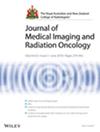What Is the Safe Observation Period Following Image-Guided Percutaneous Renal Biopsies?
Abstract
Purpose
To investigate the timing, type, and severity of complications following percutaneous, image-guided renal biopsy and to determine if the current observation period of 4 h can be safely reduced.
Methods
Consecutive image-guided percutaneous renal biopsies performed between 2017 and 2022 in adult patients by radiology medical staff were included. The RIS-PACS imaging systems and electronic medical records (EMR) were accessed to obtain relevant patient information and procedural reports. A retrospective analysis of the type and timing of complications was performed against patient demographics and biopsy-related variables. Probabilities were calculated for a range of observation periods to assess the proportion of complications identified by shortening the observation period from 4 h.
Results
Three hundred and thirty-two percutaneous renal biopsies were included, and 44 (13%) complications were identified within the 4 h observation. Twenty-nine complications were post-operative bleeding, of which 2 developed macroscopic haematuria, 25 peri-nephric haematoma and 2 had haemodynamic instability with either haematuria or peri-nephric haematoma. 64% of all complications occurred within the first hour, and 86% occurred within 2 h. Of the six complications occurring after 2 h, two were post-operative bleeding in non-targeted renal biopsies requiring admission, and the other four did not require additional observation/procedures.
Conclusion
The vast majority of complications after targeted and non-targeted renal biopsies tend to occur within the first 2 h of observation. Complications that occurred after 2 h observation were often pain related, something that can be overcome with a standardised post-operative analgesic regime. It may be possible to safely reduce observation times following image-guided targeted renal biopsies.


 求助内容:
求助内容: 应助结果提醒方式:
应助结果提醒方式:


